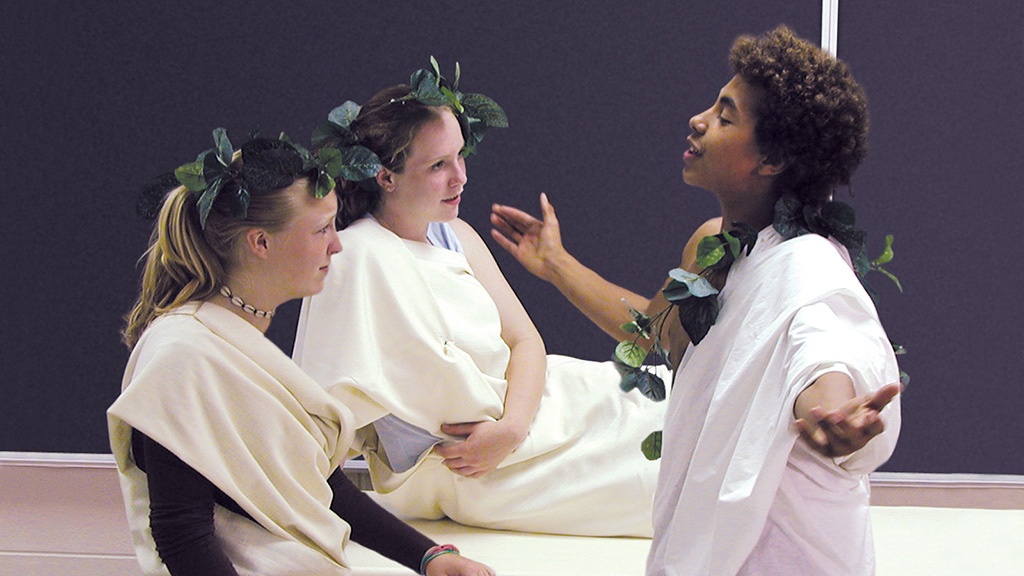
Role-playing simulations are great for retention, comprehension, literacy, and group decision-making. Here we’ll discuss what they are and why they work.
What is a role-playing simulation?
Role-playing simulations place the student in the position of a person in a particular time and place. Most of the simulations involve group problem-solving and conflict resolution. In my experience, invariably students rate these experiential learning activities among their favorite activities of the year.
How are the simulations used?
The best way to use these simulations is at the beginning of a unit when students have little prior knowledge of the historical outcome of a particular conflict. This allows a clean slate for actions instead of a predictable imitation of history just because “That’s the way it had to be.”
When the teacher does begin the regular instructional part of the unit, the students will automatically make comments like, “Wow! That is just like what happened in the game” or “Now I understand why they did what they did.” We all know from hands on learning that students remember better what they did than what they heard or read about, so these simulations allow for an unforgettable interactive learning experience that will bring history alive for them.
Other simulations are best used as culminating activities. Check the lesson plan for recommendations for each simulation. There are so many great reasons to start using role-playing simulations, which we’ll get into below.

1. Students are involved in creating their characters
The students are often given a character sheet which describes the group’s needs and desires, a brief description of the historical problem, and a copy of the rules of the game. The individual assumes the role they chose and makes decisions as the character would during that particular time period. No pre-set limits are placed on a particular person’s choices as long as they are within the realm of what was historically possible.
2. Unpredictable outcomes lead to interesting discussions
Because of the freedom to choose in these games, the outcomes are very unpredictable. No two classes finish the simulation in the exact same way, which leads to some very interesting classroom discussions about why things turned out the way they did, what could have happened differently, and how the simulation compares to what actually occurred in history.
After the simulation is completed the teacher can lead a very interesting discussion of why things happened the way they did and how they might have turned out differently in the game or actually did turn out differently in other countries. This debriefing period is the most valuable portion of the activity. Students will be eager to participate because they were active stakeholders in the decisions made instead of passive listeners hearing about other people’s problems from long ago. The activities build historical understanding, empathy for the viewpoints of others, and group decision-making skills.

3. Quick and easy play that can fit any class schedule
Choose simulations or games that can usually be played in one or two class periods. Their open-ended nature allows for playing up to one week if time permits, but after a couple of days you will find that most of the possibilities have been exhausted and continued play will have only limited instructional value.
4. Opportunity for valuable follow-up activities
Critical thinking skills are developed with thought-provoking debriefing questions. Follow-up activities might include an essay comparing the game to what actually occurred in history or a visit to an internet newsgroup on alternative history where the students’ questions can be bounced off a group of history professors, students, and aficionados across the world. This can be a very valuable form of feedback. The simulations can also be used at the end of a unit as a form of alternative assessment to see how well students can apply the skills they have learned to an actual historical problem.
5. The cost is low
Another key advantage to this is the cost. Everything you need to play simulations can usually be reproduced from the book. There is minimal setup and cleanup time required, allowing for maximum role-playing time.
6. Keep it simple
With the best role-playing simulations, as much as possible, pieces have been kept to a minimum to make cleanup and storage easier and to keep costs down for teachers on a budget. The emphasis is on role-playing so that the student can get as much as possible out of their personal learning experience and not get tied up in the mechanics of a complicated rules system.

7. Students love them
Returning students have stated that these activities are the things they best remember about the class years later. Under-motivated students will often flourish in these activities because they have found a place where their abilities can shine. Gifted students enjoy the challenge of adding as much realism and detail to the activity as possible and often enjoy taking a leadership role in the bargaining.
Many students have commented to me “This is the first time I have ever been interested in a history class” or “This makes me feel like I was really there because it was so exciting.” Often discussion over what has occurred will spill over into other classes, lunchtime, or after school. Students will compare what happened in their friends’ classes and eagerly return the next day to see if the outcome is as they expected.
Explore simulations and so much more!
Get a free trial of Active Classroom, a complete digital curriculum
Richard Di Giacomo has taught social studies and history for over 25 years in both public and private schools. His experience ranges from working with at-risk and limited English students to teaching honors and college preparatory courses. He graduated from San José State University with a BA in Ancient and Medieval History, a BA in Social Science, and an MA in American History. Richard is the author of 16 books including subjects on historical simulations, history activities for ELL students, geography, California history, humor, and historical fiction.
